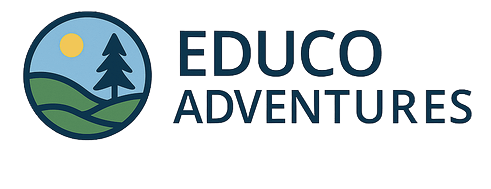How to Plan a Self-Guided Educational Tour
Discover the future of campus visits with self-guided tours! Explore at your own pace, focusing on what truly matters to you. Enjoy personalized learning, cost savings, and unparalleled flexibility. Dive deeper into academics and campus life than ever before. Plan your self-guided tour today and unlock your ideal college experience!
Important information

- Self-guided tours offer flexibility, allowing you to explore at your own pace and focus on your interests.
- These tours are cost-effective, eliminating guide fees and offering budget-friendly options like public transport and packing your own meals.
- Planning is key: research online, use maps (digital and printed), and create a flexible itinerary.
- Technology enhances the experience: use mobile guides, tour apps with AR features, and GPS navigation for support.
- Self-guided exploration builds confidence, fosters independence, and allows for a personalized learning experience tailored to your curriculum needs.
Why Choose a Self-Guided Educational Tour?
Take a self-guided campus tour and discover your ideal college experience. Explore at your own pace, focusing on what matters most to you. Gain deeper insights into campus life and academics, unlike traditional tours. Personalize your visit by exploring areas aligned with your academic goals. A self-guided tour empowers you to make informed college choices.
Benefits of Self-Guided Tours for Students
Self-guided tours empower students by offering flexibility and control over their learning. Exploring at their own pace, students can focus on individual interests, building confidence and fostering independence. This personalized approach leads to deeper engagement with the material. The firsthand classroom experience provides valuable insights into the academic environment, allowing students to make more informed decisions about their future education. This immersive, hands-on approach is particularly beneficial for visual learners. Self-guided tours offer several key advantages:
- flexible learning experience,
- personalized approach,
- deeper engagement with the material,
- valuable insights into the academic environment,
- greater independence.
Cost-Effectiveness Compared to Guided Tours
Independent educational travel offers significant cost savings compared to guided tours. Eliminating guide fees and opting for budget-friendly transport, like public transit or cycling, drastically reduces expenses. You can also take advantage of discounts on admission fees often unavailable to tour groups. A personalized itinerary allows for unparalleled flexibility, enabling you to include free activities. Explore local parks, visit museums on free admission days, and discover historical sites at your own pace. Packing your own meals saves money compared to expensive tour meals and caters to your dietary preferences. This makes self-guided educational trips a cost-effective way to learn and explore.
Cost Savings
- No guide fees.
- Affordable transportation options.
- Potential discounts on attractions.
Flexibility and Control
- Personalized itinerary.
- Free activities like parks and museums.
- Control over meal costs and dietary needs.
Planning Your Self-Guided Campus Visit
Planning a campus visit requires thorough preparation. Begin your research online by exploring the university’s website. Learn about academic programs, student life, and available resources. Use online maps to locate parking, buildings, and key points of interest.
Personalize Your Visit
Focus on what truly interests you. Schedule visits to specific departments. Explore essential facilities like libraries, labs, and student centers. Don’t forget social hubs, dining halls, and recreational areas.
If your schedule permits, attending a class or information session can offer valuable insights.
Campus Maps: Your Essential Guide
Digital maps provide interactive navigation and detailed location information. Printed maps offer a helpful overview. Following marked routes ensures you efficiently cover key areas. Your map can also help you locate restrooms, emergency phones, and other important services.
Research and Preparation for a Successful Tour
Planning a self-guided campus tour requires thorough research. Before your visit, explore campus maps and suggested routes online. Locate key buildings such as academic halls, student centers, and administrative offices. Research the school’s history and programs to gain valuable context. Thorough preparation will ensure a productive visit, providing a comprehensive overview of the campus and its offerings.
Creating a Customizable Itinerary
Craft a personalized itinerary by selecting key locations and educational activities aligned with your learning objectives. Start by identifying must-see destinations and allot sufficient time for each, factoring in breaks and travel. A flexible itinerary is recommended, as it accommodates spontaneous discoveries and allows for adjustments.
Identify your learning objectives. What do you want to achieve during your trip?
Select key locations and educational activities that align with your objectives. Research destinations and activities that offer relevant learning experiences.
Create a flexible itinerary. Allot sufficient time for each location, including breaks and travel time, but be prepared to adjust your schedule as needed.
Leverage available resources. Use guidebooks, online platforms, and educational apps to gather site information, historical context, and practical travel tips.
Enhance your experience with technology. Consider using audio guides and educational apps to enrich your learning during the tour.
Utilizing Campus Maps and Tour Routes
Campus maps and designated tour routes simplify navigation, guiding you to key locations and providing a framework for self-guided exploration. These pre-planned routes offer flexibility and enhance the educational value of your visit, ensuring you don’t miss important sites.
Flexibility and Individualized Experience
Self-guided tours empower students to explore independently, building confidence and decision-making skills. Free from time constraints and group pressure, students discover areas of interest at their own pace, leading to a deeper understanding of the campus or subject matter. This personalized learning journey, tailored to specific curriculum needs, enhances educational value. Focusing on relevant locations and exhibits allows students to delve into specific study areas, maximizing learning outcomes. A self-guided tour offers a powerful and personalized learning experience.
Freedom and Confidence in Exploration
Independent exploration cultivates student confidence and allows for personalized learning. Controlling their own pace, students can delve into subjects that pique their interest. This autonomy fosters a deeper connection with the campus, enhancing their sense of belonging. Independent exploration offers several benefits:
- boosts student confidence,
- personalizes the learning experience,
- allows students to control their learning pace, and
- fosters a deeper connection with the campus.
Personalizing the Tour to Meet Curriculum Goals
Self-guided tours empower students to personalize their visits and align explorations with curriculum goals, enhancing learning. Students can focus on subjects relevant to their studies. For example, history students can visit historical landmarks, and science students can explore science museums and nature centers. This personalized approach enriches the tour and ensures curriculum relevance.
Enhancing the Experience with Technology
Interactive mobile guides and tour apps offer exciting features, such as audio guides that vividly bring destinations to life. They also include augmented reality experiences, allowing you to imagine historical figures appearing right before your eyes. Navigation is a breeze with interactive maps.
Accessibility Features
- Audio descriptions for the visually impaired.
- Transcripts for those who prefer reading.
- Adjustable font sizes for comfortable viewing.
Benefits of Accessibility
These features ensure everyone can enjoy the tour.
Interactive Mobile Guides and Tour Apps
Interactive mobile guides and tour apps are fantastic tools for travelers. They offer curated information, often enhanced with multimedia like videos and images. These apps not only provide turn-by-turn directions, but also highlight key points of interest. Many include quizzes and interactive exercises to reinforce learning. Some even incorporate augmented reality, overlaying digital information onto the real world, similar to Google Earth or BBC History. Rick Steves Audio Europe is another excellent example.
Accessibility Features in Self-Guided Tour Apps
Self-guided tour apps often include helpful accessibility features, making them usable for everyone. For instance, audio descriptions aid visually impaired visitors, while text-to-speech functionality assists those with reading difficulties. These features promote inclusivity, ensuring a more accessible and enjoyable experience for all.
Tools for Navigation and Support
Feel secure with GPS navigation and on-call support throughout your self-guided tour. Assistance is just a call away.
Enhance your independent exploration with multimedia content: watch videos and explore interactive maps to discover even more at your own pace.
Using GPS Navigation and On-Call Support
Explore the campus independently with GPS navigation. Need assistance? 24/7 support is just a call away, ensuring a safe and seamless self-guided experience.
Exploring Independently with Multimedia Content
Multimedia breathes life into faraway places. Vivid photos and videos weave captivating narratives, offering detailed glimpses into specific locations. Audio recordings deepen engagement, immersing you in the soundscape of each environment. Interactive elements further enhance the experience, transforming passive observation into active participation.Imagine exploring a historical site with a 360° panoramic view. Virtual tours offer immersive exploration from the comfort of your device. Augmented reality elevates this experience by overlaying digital information onto the real world. Picture historical facts appearing as you gaze at a monument, or scientific details emerging as you examine a rare plant. Perhaps you’d appreciate artistic interpretations related to the tour’s theme—the possibilities are endless.
Multimedia Learning Advantages
- Caters to diverse learning styles,
- Makes complex information more accessible,
- Boosts comprehension.
Engaging Experience
Transforms learning into a dynamic and engaging experience, fostering a deeper understanding of the subject matter.













